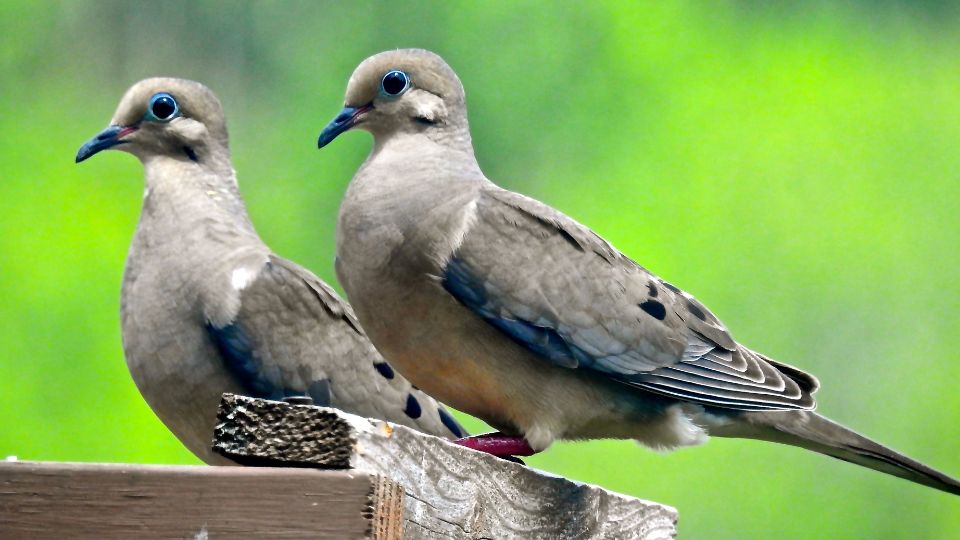Doves will mate with the same partner throughout their lifetime. Doves are typically monogamous, but some will only stay with the same partner during the single breeding season.
Doves are common in backyards all over North America and are beloved by many. Of the 15 species of doves in the United States, the mourning dove is by far the most common. Because they are so prevalent in North America, all but the most avid bird watchers use “dove” to identify what is likely a mourning dove.
But all doves share similar mating habits, nesting practices, and eggs. Doves are easily identifiable by their slim body and fawn-colored feathers. Despite this, the most familiar trait of doves is their song.
The male dove almost always makes the distinct cooing sound. This courtship ritual is a call to eligible females, letting them know he is searching for a potential mate. Their cooing call isn’t the only unique habit of the doves.
Their mating habits, nests, and even how they feed their young are some of the most fascinating behaviors among wild birds. There is so much to learn about what makes these beautiful birds unique. First, let’s start with how to tell them apart from similar birds.
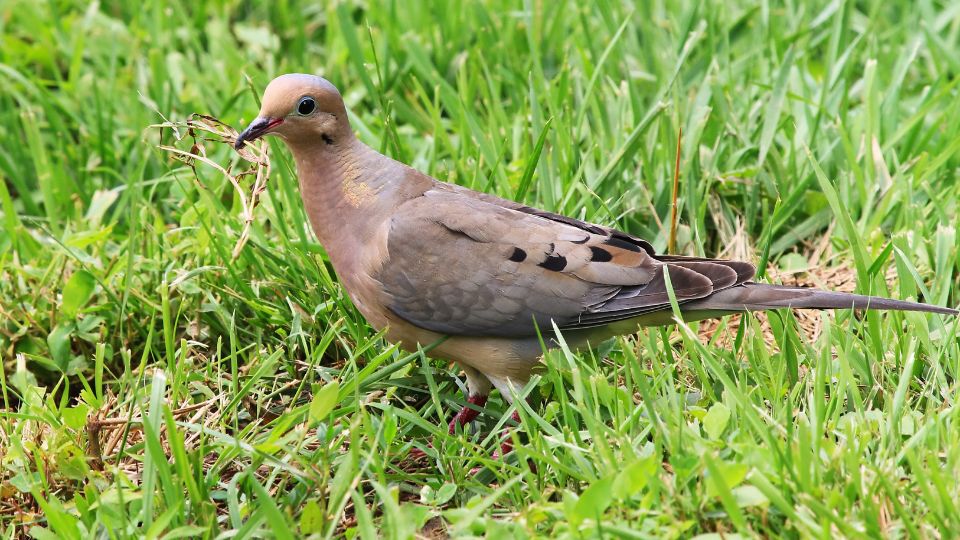
How can you tell a dove from similar birds?
Doves and pigeons come from the Columbidae family. With over 300 Columbidae bird species worldwide, whether they are called doves or pigeons depends mainly on where you’re from and the language you speak.
In North America, larger members of the Columbidae family are referred to as pigeons, while the smaller birds are doves. Zenaida macroura is the largest subspecies of dove in America, commonly known as the mourning dove. This species is also referred to as the turtle dove, the rain dove, and was once called the Carolina pigeon.
Mourning doves are found year-round in the United States, Mexico, and the Caribbean. During the warmer breeding season months, they can also range into Canada. Outside of the breeding season, mourning doves can be found as far south as Panama.
Doves are slim birds and about 12 inches in length. Their body is fawn brown, and their wings are grayish brown. Small black feathers dot both wings, though the pattern is not necessarily symmetrical.
The most obvious feature of the mourning dove is the single black spot at the top of their neck, directly below each eye. Other doves share the same coloration without the eye dot. Some doves even have a black ring around their neck.
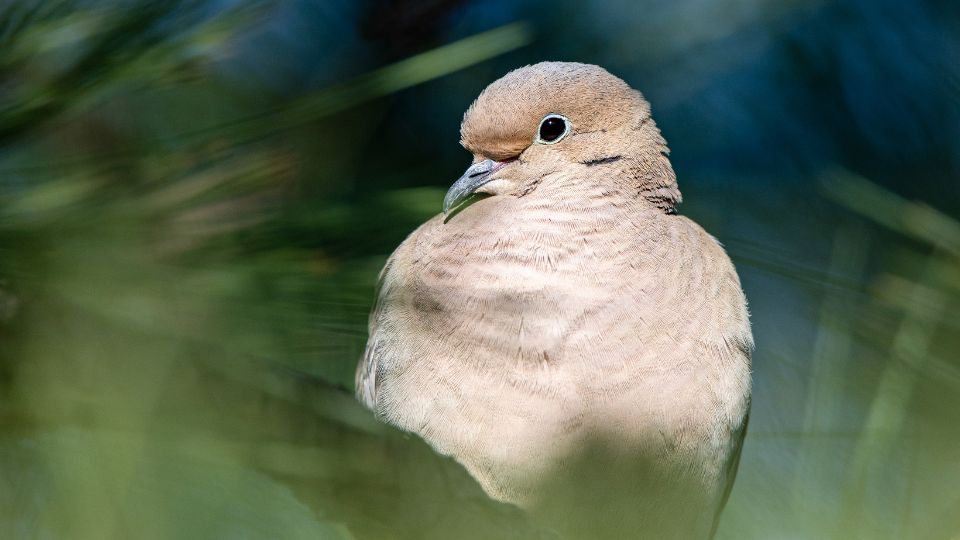
Do doves mate for life?
Many cultures see doves as a symbol of loyalty and love because they mate for life. Male doves will coo to entice a female mate as soon as he reaches sexual maturity–right around the end of their first year. Once a mate is chosen, the dove pair will stick together for the rest of their lives.
If one of the mating pairs dies during the breeding season, the surviving bird will seek out another mate immediately. Sometimes the mating pair already has eggs when this happens.
If eggs or baby birds are already in the nest, the surviving mate will attempt to raise the babies before finding another mate. Mating pairs that survive the entire breeding season will stay together year-round.
What is the average lifespan of a dove?
The average lifespan of a dove is 1.5 years. Doves have an extremely low lifespan for their size. Seventy five percent of doves do not survive their first year. Those that do, only have a 40% chance of surviving past 1.5 years old.
Just 10% of doves survive five years to the end of their typical wild lifespan. The high mortality rate drives the surviving dove to seek a new mate during the same breeding season.
It’s not unheard of for a single dove to have a different mate for each brood during one mating season if their mate dies. In contrast, no matter the species, a captive dove has an average lifespan of 19 years.

How can the lifespans be so different between captive and wild dove species?
Predators are the single biggest factor in the shortened lifespan of doves. Doves nest on or near the ground, which makes the parents and nestlings easy targets for foxes, raccoons, bobcats, and even skunks.
Flighty and focused primarily on survival, a mating pair will abandon a nest at the slightest sign of danger. This leaves eggs and even nestlings unprotected from the many natural hazards doves face.
But it isn’t only natural hazards that plague the dove. Like many wild birds, hundreds of thousands of doves nationwide are killed by outdoor cats each year.
One unique factor in the short lifespan of mourning doves is human hunting. According to the US Fish and Wildlife Service, an estimated 24 million mourning doves are killed by hunters each year. A popular game bird, most mourning doves, are hunted purely for sport.
Despite all the challenges they face and their relatively short lifespan, doves are designated as of least concern by conservationists. There are about 400 million doves in the United States. Approximately 350 million of those doves are mourning doves.
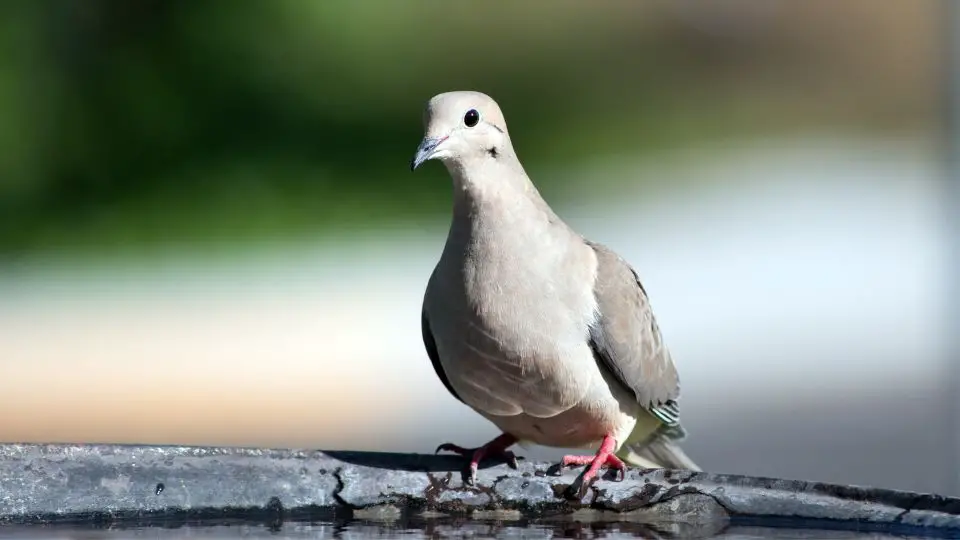
Where can you find doves?
Doves prefer open land with a few low trees and shrubs for cover and nesting. During the winter, doves sleep in dense evergreens and cover that protects them from weather and predators.
Doves–including mourning doves–are among the most widespread and adaptable North American birds. They do well in urban and rural areas alike. Doves are drawn to garden habitats that include open lawns bordered by a plethora of flowers, shrubs, and trees.
In the United States, mourning doves are found year-round in 47 of the 48 contiguous states. North Dakota is the only bordering state without a year-round population of mourning doves, though they are present during breeding season.
Mourning doves were introduced to Hawaii in the mid-1960s. Of the non-native dove species present in Hawaii, mourning doves are the least common and not invasive. During mating season, mourning doves can also be found nesting in southeast Alaska.
Do doves have a mating season?
The mourning dove boasts the longest mating season of any bird in the United States. From March to September, mourning dove pairs are hard at work raising and caring for their broods. In some areas, mourning doves may breed as late as October.
Both male and female doves work together to make the nest, using loose sticks, leaves, weeds, pine needles, and assorted bits of discarded paper they find. These messy, haphazard nesting sites can be found on low horizontal tree branches, in and against stumps, bushes, rocks, and buildings.
If they cannot find elevated areas to nest, they nest on the ground. These delicate and fragile nests take up to four days to complete. The fragility of the nests and the dove’s skittish nature contribute to the high mortality rate in young birds.
If the parents are startled, they may knock the eggs or nestlings out of the nest, exposing them to the elements and predators. Doves lay two white eggs per clutch. Due to their long breeding season, a pair of doves typically raise three broods but can raise as many as six in a single breeding season.
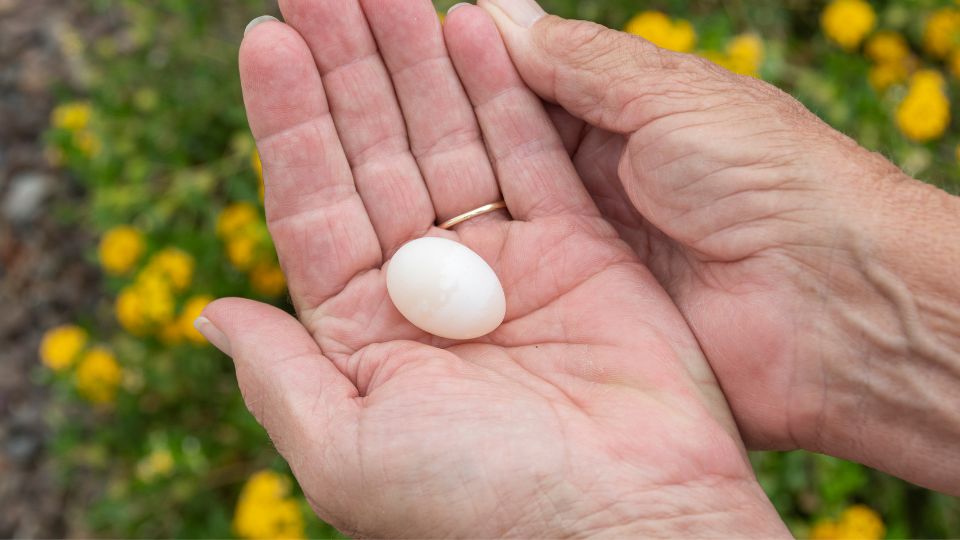
How long do baby doves stay in the nest?
Doves will typically lay two eggs at a time and incubate them for around 14 days. Adult males and females share parenting duties from incubation until the fledglings leave the nest.
Mating pairs have been known to use the same nesting site for the entire season, but they will also abandon a failing nest and rebuild a new one nearby. If the weather is good and the babies don’t need a parent to shield them, the adults will begin to leave hatchlings alone for a few hours at 6 or 7 days old.
Night brooding stops by day 9 or 10. The two baby birds will leave the nest by days 12-14. Male and female mourning doves look identical, so inexperienced bird watchers may be concerned that the adult bird is not leaving the nest to eat. But doves are known to stick to a parenting schedule.
The male stays in the nest during the day while the female broods at night. They often switch places without much fanfare, making the change easy for birders to miss.

How do doves feed their babies?
Doves are crop feeders, and will feed their babies by regurgitating crop milk, also known as pigeon milk. They eat almost exclusively seeds, which they will eat until they fill their crop, then digest. The crop is located in the esophagus. Once the food is digested, a substance called crop milk is secreted from the crop.
Crop milk is also called pigeon milk. Both male and female pigeons and doves produce crop milk. Unlike mammalian milk, crop milk is a yellow substance thick like cottage cheese. It’s high in protein, fat, and antibodies.
To access the crop milk, the nestling sticks its head inside the adult dove’s mouth. When the hatchlings are a few days old, they switch from crop milk to regurgitated seeds. Both adults will continue feeding the young for about a month after hatching.
The adults will also stay with the young for a short time after they leave the nest. Then the pair will mate again and start the process over. Despite a lifespan shortened by predators and sport hunting, doves have managed to thrive in North America.
They are very adaptable and are found from the deserts of the southwest to the northernmost parts of the east coast. They are delicate and beautiful, and their unique and interesting behaviors make them a favorite of bird watchers all over North America.

